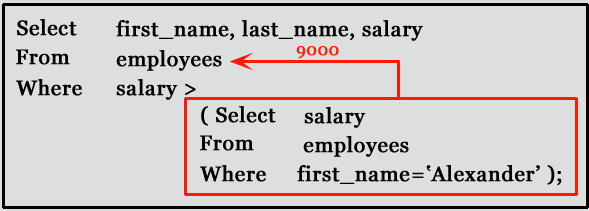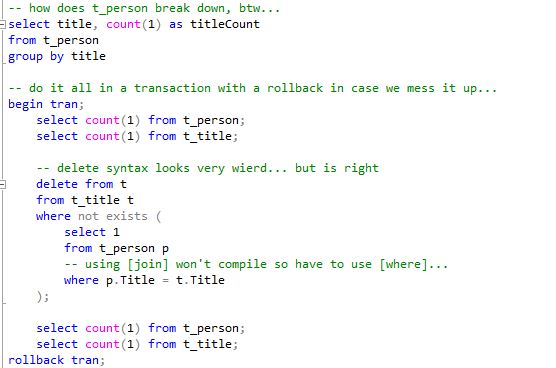
WHERE EXISTS tests for the existence of any records in a subquery. EXISTS returns true if the subquery returns one or more. In this article we discuss subqueries in the WHERE clause.

Other articles discuss their uses in other clauses. Specifies a subquery to test for the existence of rows. Is a restricted SELECT statement. Syntax EXISTS ( subquery ) Arguments.
If the subquery returns NULL, the EXISTS operator still returns the result set. This is because the EXISTS operator only checks for the existence of row returned by the subquery. It does not matter if the row is NULL or not.

The subquery has no connection to the outer query. So, the not exists will either filter out all rows or keep all rows. In this case, the engine runs the subquery and determines that at least one row is returned.
Hence, not exists returns false in all cases, and the nothing is returned. In the second case, the subquery is a correlated subquery. The EXISTS operator is used to test for the existence of any record in a subquery.
Next, the NOT EXISTS subquery runs. This subquery gets a list of customers that were created prior to days ago. Since the second subquery uses the NOT EXISTS statement, the main query does a match with the NOT EXISTS subquery against the customer database, and filters out records where they exist in the subquery. Let’s take some examples of using the subqueries to understand how they work.
In the previous example, you have seen how the subquery was used with the IN operator. If it does, the condition is satisfied. In the next session, we have thoroughly discussed the above topics.
SQL subquery examples. You use the EXISTS operator to test if a subquery returns rows, and short circuits as soon as it does. On the other han you use JOIN to extend the result set by combining it with the columns from another related table. If a subquery returns any rows at all, EXISTS subquery is TRUE, and NOT EXISTS subquery is FALSE.
Id) FROM Customer C This is a correlated subquery because the subquery references the enclosing query (i.e. the C.Id in the WHERE clause). Phil Factor explains why you should prefer use of EXISTS over IN, when comparing data sets using a subquery. While there is no longer any significant performance advantage, using NOT EXISTS will avoid unexpected when the subquery ’s source data contains NULL values. What’s a correlated subquery ? It’s when a subquery refers to a column that exists in the outer query. So far, our subqueries are independent queries, with the used inside an outer query.
This tutorial requires a good knowledge of the subquery concept. A subquery which is used with the IN operator returns a set of zero or more values. After the subquery returns values, the outer query makes use of them.
The following query finds the names of all mountain bikes and road bikes products that the Bike Stores sell. It can be used in a SELECT, INSERT, UPDATE, or DELETE statement. Typically, a subquery is used in conjunction with EXISTS. This query will return all rows from the ProductSubcategory table, because the inner subquery returns rows (which are not related to the outer query at all).
EXISTS specifies a subquery to test for the existence of rows. Example and 3A uses NOT EXISTS and this example and 4A use EXISTS. It is used to restrict the number of rows returned by the SELECT Statement.
Inga kommentarer:
Skicka en kommentar
Obs! Endast bloggmedlemmar kan kommentera.